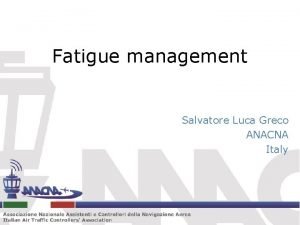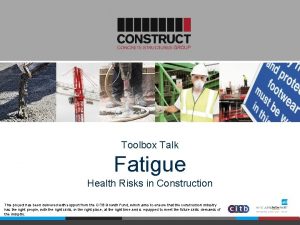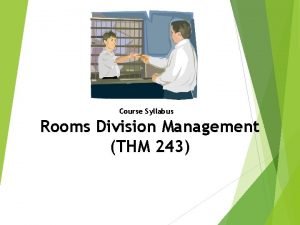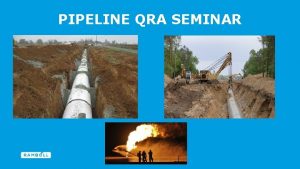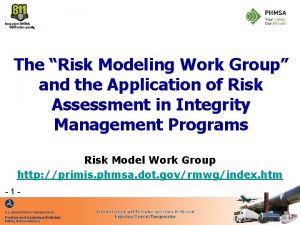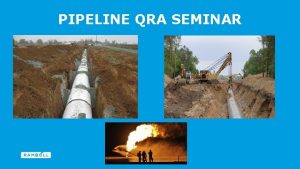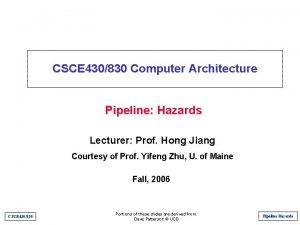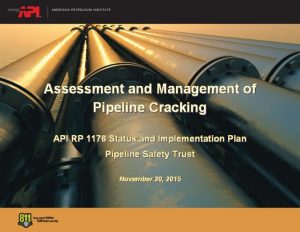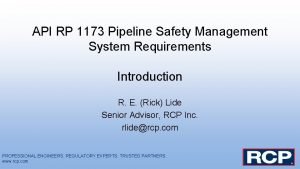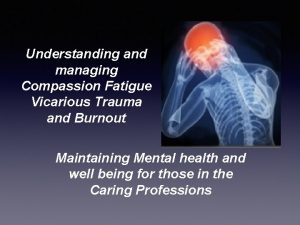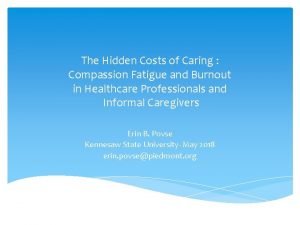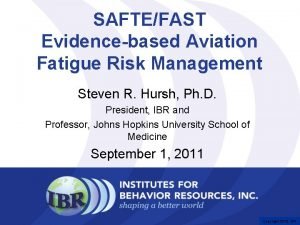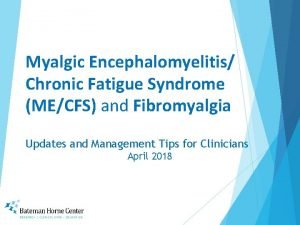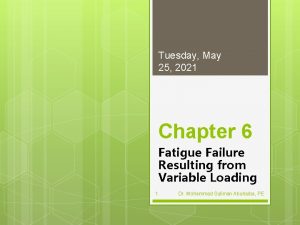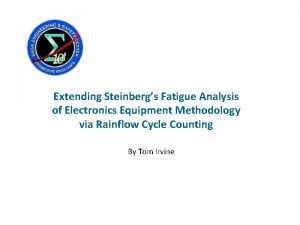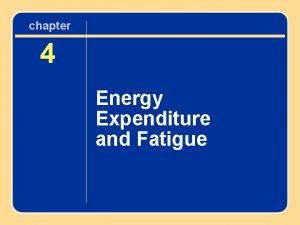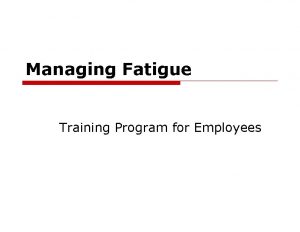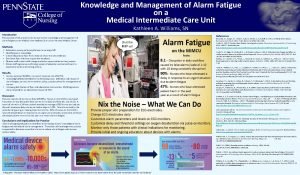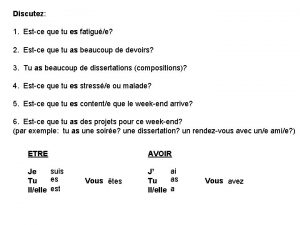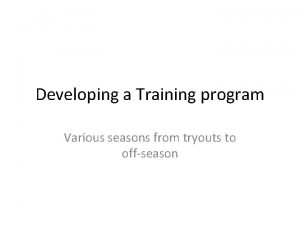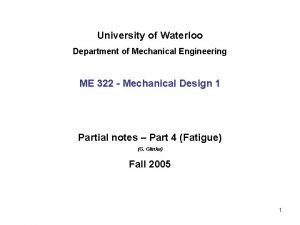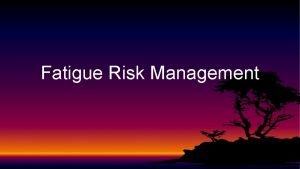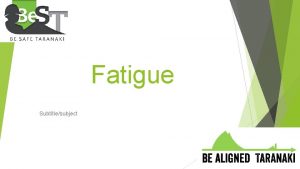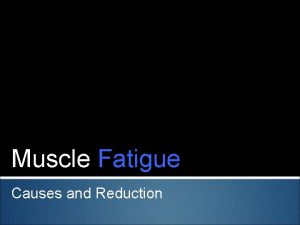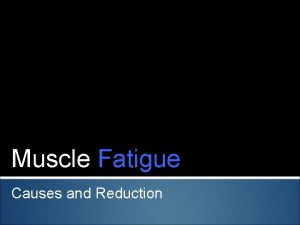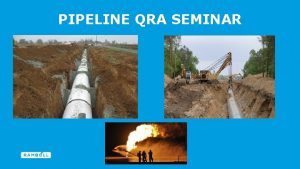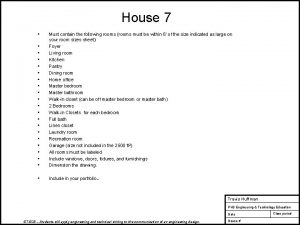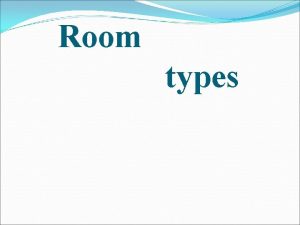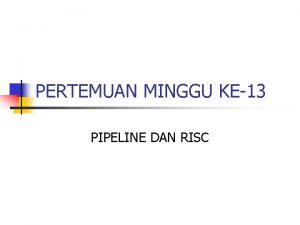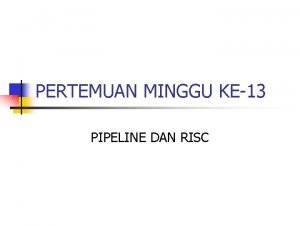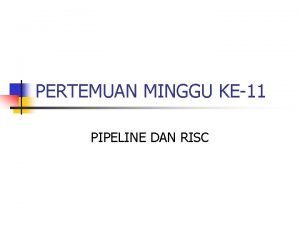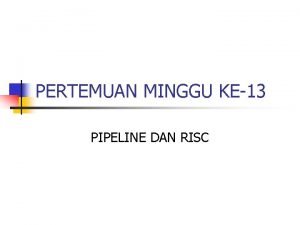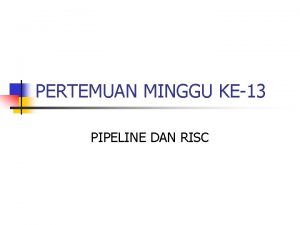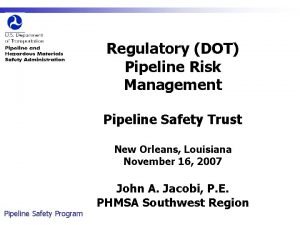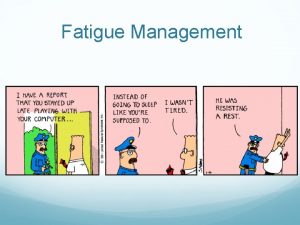Source Fatigue Risk Management for Pipeline Control Rooms
































- Slides: 32

Source

Fatigue Risk Management for Pipeline Control Rooms Ohio Gas Association Technical Conference March 2018 Charles Alday

Reduce Risks of Fatigue

Fatigue Mitigation The Pipeline and Hazardous Materials Safety Administration (PHMSA) of the United States Department of Transportation issued safety regulations in 2011 that required pipeline control rooms to implement methods “to reduce the risks associated with Controller fatigue that could inhibit a Controller’s ability to carry out the roles and responsibilities the operator has defined. ”

Control Room Management Fatigue Mitigation Alarm Management Operating Experience Shift Change SCADA General Change Management Training Roles and Responsibilities Compliance

Regulatory Language CFR § 192. 631(d) and CFR § 195. 446(d) Fatigue mitigation. Each operator must implement the following methods to reduce the risk associated with Controller fatigue that could inhibit a Controller’s ability to carry out the roles and responsibilities the operator has defined:

Regulatory Language 1. Establish shift lengths and schedule rotations that provide Controllers off-duty time sufficient to achieve eight hours of continuous sleep 2. Establish a maximum limit on Controller hours-ofservice, which may provide for an emergency deviation from the maximum limit if necessary for the safe operation of a pipeline facility

Regulatory Language 3. Educate Controllers and Supervisors in fatigue mitigation strategies and how off-duty activities contribute to fatigue 4. Train Controllers and Supervisors to recognize the effects of fatigue

That is Straightforward Time Off § Opportunity for Eight Hours of Sleep Between Shifts § Maximum Limits on Hours of Service Training and Education § Fatigue Mitigation Strategies § Effects of Off-Duty Activities § How to Recognize Fatigue Effects

People are Unpredictable! “ People are unpredictable creatures, they invent rules which they break incessantly and they follow impulses which they later cannot explain. “



Other Relevant Documents § PHMSA CRM FAQs (1 -16 -18) § PHMSA CRM Inspection Questions (3 -20 -12) § Advisory Bulletin: Countermeasures to Prevent Human Fatigue in the Control Room (August 2005) § Staffing of Regular, Cyclic 24/7 Operations (James Miller, June 2011 White Paper) § Investigating the Possible Contribution of Fatigue to Pipeline Mishaps (James Miller, June 2011 White Paper) § Shift Plans with Seven Consecutive Shifts (James Miller, April 2012 White Paper)

What is an FRMS? § FAQ D. 09. PHMSA promotes the use of a fatigue risk management system (FRMS) as a tool for implementing fatigue mitigation

FRMS Should Include: Scientific Research Hours of Work Diagnostic Fatigue Hazard Analysis Roster Design & Workforce Planning Policies & Procedures Contingency Planning Compliance & Audit Training & Education

Information and Tools § Fatigue Modeling Software (FAID) § Fatigue Hazard Analysis Software (GRAID and HAZAID) § Human Factors & Control Room Assessments § Workload Assessments § Information from Other Transportation Modes

Risk Exposures & Safeguards

FRMS Statements – Reduce Risks

FRMS Statements – Reduce Risks

FRMS Document Components 1. 2. 3. 4. 5. FRMS Responsibilities by Job Function Shift Length, Start and Start Times Schedule Rotations Staffing Analysis Commute Time Analysis

Sliding 65 Hour Guidance

FRMS Document Components 6. Fatigue Training 7. Fatigue Education

FRMS Document Components 8. Environmental and Ergonomic Factors 9. Fatigue Countermeasures during Shifts 10. Maximum Hours of Service (HOS) 11. Emergency Deviations from HOS


FRMS Document Components 12. 13. 14. 15. 16. 17. Incident Investigation for Fatigue Self Reporting Observations for Signs of Fatigue Employee Issues that Affect Alertness Evaluation of FRMS Evaluation of Fatigue Training Program

What Is New Since 2011 -2012? § Related to the “fatigue mitigation” of the CRM rule, there are no changes in the regulation, FAQs, or inspection questions. § The NTSB still has “Reduce fatigue-related accidents” on its “Most Wanted List” for all modes but pipelines. § No pipeline accidents investigated by the NTSB since 1996 cite human fatigue as a contributing factor.

What Is New Since 2011 -2012? § Fatigue (and other human factors) are more often cited in automobile, trucking, railroad, marine, and aviation accidents § Some of the other human factors include: – – Distractions Complacency Stress Workload Pressure

But Fatigue is a Human Problem

What Is New and Helpful

Conclusion § Satisfying the regulations should not be difficult you have adequate staffing to avoid excessive overtime and regular traiing and education is provided § Implementing and maintaining a FRMS requires regular attention by someone who is interested in identifying the specific fatigue risks

Conclusion

Source
 Fatigue risk management system template
Fatigue risk management system template Difference between linear and nonlinear control system ppt
Difference between linear and nonlinear control system ppt Pipeline vs superscalar
Pipeline vs superscalar Sleep wake cycle
Sleep wake cycle Credit risk market risk operational risk
Credit risk market risk operational risk Pipeline control room software
Pipeline control room software Tracing vs vouching
Tracing vs vouching Fatigue management toolbox talk
Fatigue management toolbox talk Drivers fatigue management test
Drivers fatigue management test Rooms division management syllabus
Rooms division management syllabus Pipeline risk assessment software
Pipeline risk assessment software Pipeline risk modeling
Pipeline risk modeling Hazid guidewords
Hazid guidewords Key risk indicators for vendor management
Key risk indicators for vendor management Risk map risk management
Risk map risk management Pipeline hazards in computer architecture
Pipeline hazards in computer architecture Pipeline crack management
Pipeline crack management Api 1173
Api 1173 Compassion fatigue signs
Compassion fatigue signs Compassion fatigue vs burnout
Compassion fatigue vs burnout Saftefast
Saftefast Myalgic encephalomyelitis
Myalgic encephalomyelitis Beach marks fatigue
Beach marks fatigue What is predominant energy system
What is predominant energy system Compassion fatigue handout for teachers
Compassion fatigue handout for teachers Gerber equation fatigue
Gerber equation fatigue Steinberg fatigue
Steinberg fatigue Energy expenditure and fatigue
Energy expenditure and fatigue Employee fatigue training
Employee fatigue training Monitor alarm fatigue an integrative review
Monitor alarm fatigue an integrative review Es-tu fatigué
Es-tu fatigué 30m sprint fatigue test
30m sprint fatigue test Mechanical engineering design
Mechanical engineering design



